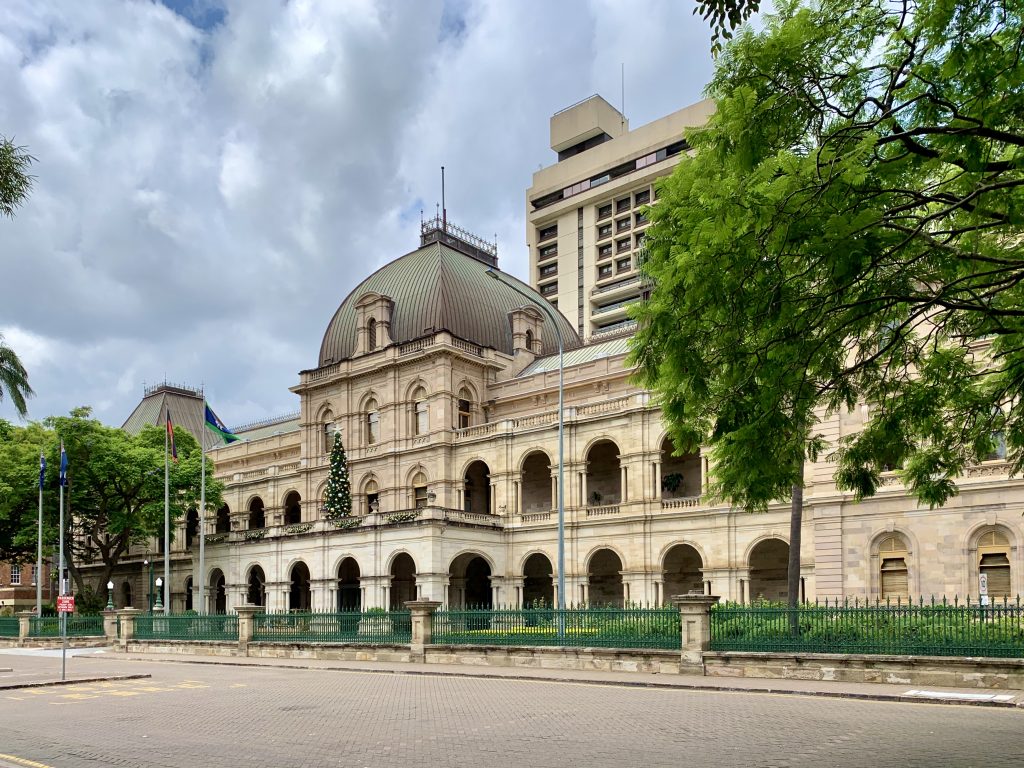
Sandstone Building Parliament House | When it comes to the history of Brisbane’s iconic Parliament House, the construction materials played a significant role in shaping this historical landmark. Additionally, one such crucial material was the locally-sourced sandstone from a local quarry.
Which not only contributed to the building’s construction but also played a part in shaping its architectural identity. Let’s delve deeper into the historical significance of sandstone and its pivotal role in the construction of Parliament House.
The construction of Parliament House was prompted by a devastating fire in December 1864. Which destroyed a significant portion of the wooden structures in Queen Street. The urgency to rebuild in a more resilient and fire-resistant manner led to the decision to construct a purpose-built parliamentary building. The foundation stone, weighing four tonnes, was laid on 14 July 1865 by Governor George Ferguson Bowen. Marking the beginning of a monumental construction undertaking. 500,000 Sandstone Bricks were used in this construction.
However, while the construction process began with enthusiasm. Additionally, challenges soon arose, particularly in sourcing quality building materials. The original tenderers faced difficulties in obtaining good quality sandstone. Which was crucial for the construction of Parliament House. Also, these challenges led to the decision to rent a quarry at Woogaroo. This was to ensure a reliable supply of the much-needed sandstone.
Although this approach incurred additional costs, it was essential in overcoming the initial hurdles and ensuring the progress of the construction. The significance of the Brisbane sandstone quarry extends beyond its role as a mere source of construction material. The unique properties of the local sandstone, known for its durability and attractive natural colour variations. Additionally, this contributed to the distinctive aesthetic appeal of Parliament House.
The solid colonnades, which helped keep the building cool in summer, and the impressive timber work were made possible by the locally-sourced sandstone. Furthermore emphasizing its invaluable contribution to the building’s architectural character. As the construction progressed, the cost estimate for Parliament House rose significantly. Prompting questions and concerns in the public domain. The decision to rent the quarry at Woogaroo. While crucial in also ensuring a good supply of quality local sandstone. Led to an increase in the overall construction costs. This escalation sparked discussions and speculation regarding the management of resources and costs. With Tiffin, the architect, being associated with costly buildings throughout his Queensland career.
In conclusion, the sandstone quarry played a pivotal role in the construction of Parliament House. Leaving an indelible mark on its architectural and historical significance. However, the challenges faced in obtaining quality sandstone and the subsequent decisions made to overcome these hurdles. Underscore the resilience and determination that characterised this monumental construction project.
Ultimately, the enduring legacy of Parliament House stands as a testament to the invaluable contributions of the Brisbane sandstone and the dedicated individuals involved in its construction.

